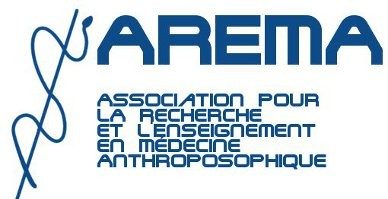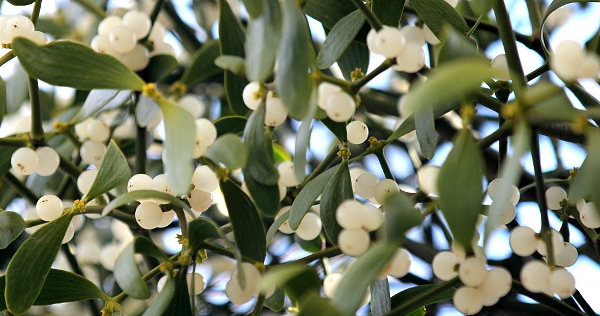Pour de plus amples informations et accès aux publications récentes :
https://www.ivaa.info (Research)
https://medsektion-goetheanum.org (Forschung)
https://www.anthromedics.org (Search results)
Évaluation Générale de la médecine anthroposophique sous forme d’un HTA report (Health Technology Assessment)
HTA report : « Anthroposophic Medicine, Effectiveness, Utility, Costs, Safety »
Évaluation de la médecine Anthroposophique en tant que Système
Forschungsstrategie Anthroposophische Medizin/Research strategy anthroposophic medicine:
Kienle GS, Eran Ben-Arye, Bettina Berger, Cristobal Cuadrado Nahum, Torkel Falkenberg, Kapócs Gabor, Helmut Kiene, David Martin, Ursula Wolf and Henrik Szöke: Contributing to Global Health – Development of a Consensus-based Whole Systems Research Strategy for Anthroposophic Medicine. Evidence-Based Complementary and Alternative Medicine, Volume 2019, Article ID 3706143,
https://doi.org/10.1155/2019/3706143
Download: https://www.ncbi.nlm.nih.gov/pmc/articles/PMC6875260/pdf/ECAM2019-3706143.pdf
Étude comparative Médecine Anthroposophique / Médecine Conventionnelle :
Anthroposophic vs. Conventional therapy of acute respiratory and ear infections : a prospective outcomes study. 2005.
Harald J. Hamre, Michael Fischer, Marianne Heger, David Riley, Max Haidvogl, Erik Baars, Eileen Bristol, Michael Evans, Reinhard Schwarz, Helmut Kiene.
Conclusions : fewer antibiotics, fewer side effects of drugs, increased patient satisfaction.
Étude AMOS :
Anthroposophic Therapies in Chronic Disease : The Anthroposophic Medicine Outcomes Study. 2004.
H. J. Hamre, C. Becker-Witt, A. Glockmann, R. Ziegler, S.N. Willich, H. Kiene.
Conclusions : Anthroposophic therapies were associated with long-term reduction of chronic disease symptoms, improvement of health-related quality of life, and health cost reduction.
Diagnostic Profiles and Prescribing Patterns in Everyday Anthroposophic Medical Practice – A Prospective Multi-Centre Study. (2009).
Elke Jeschke, Thomas Ostermann, Manuela Tabali, Angelina Bockelbrink, Claudia M. Witt, Stefan N. Willich, Harald Matthes.
Conclusions : A broad range of anthroposophic remedies and non-pharmacological therapies are prescribed for a specific set of diseases in everyday anthroposophic practice. Particularly patients <60 years received anthroposophic care. Our findings will help in the planning and implementation of further studies.
Études descriptives, montrant l’enracinement de la Médecine Anthroposophique dans la pratique et le peu d’effets secondaires :
EVAMED (Evaluation of Anthroposophic Medicine Pharmacovigilange Network), avec notamment le détail des formes galéniques, les injectables venant en 2ème position (16,5% des prescriptions) après les Globuli (19,5%) qui montre que la médecine anthroposophique est une médecine intégrative puisque 41,8% des prescriptions relèvent de la médecine anthroposophique sur 50 000 patients et 200 000 consultations
EVAMED (effets indésirables)
Adverse drug reactions for CAM and Conventional Drugs detected in a Network of Physicians Certified to Prescribe CAM Drugs. (2012).
Manuela Tabali, Thomas Ostermann, Elke Jeschke, Claudia M. Witt, Harald Matthes.
Conclusions : A sample of 38 CAM physicians reported the occurrence of at least 1 ADR for 0,4% of treated patients in a 5.5-year study period. There were no serious ADRs reported for CAM drugs. In a subsample of 7 physicians who agreed to report all nonserious ans seroious AFRs, 1,2% of patients experienced at least 1 ADR; rates of ADRs per 10000 prescriptions were 4.4 for CAM drugs and 13.0 for CON drugs.
Études concernant la Forme Galénique Injectable
Efficacité : Comparaison Gencydo (Succus Citri/Cydonia) Injection vs Spray
Citrus/Cydonia Compositum Subcutaneous Injections versus Nasal Spray for Seasonal Alergic Rhinitis : A Randomized Controlled Trial on Efficacy and Safety. (2011).
Erik W. Baars, Miek Jong, Andreas F.M. Nierop, Inge Boers and Huub F.J. Savelkoul.
Conclusions : Both routes of administration demonstrated immunological and clinical effects, with larger inflammatory and innate immunological effects of the nasal spray route and larger allergen-specific clinical effects of the subcutaneous route, and are safe.
Sécurité :
Safety of Homeopathic Injectables for Subcutaneous Administration : A Document of the Experience of Prescribing Practitioners, (2006).
Erik W. Baars, Ruth Adriaansen-Tennekes and Karin J.L. Eikmans.
Conclusions : The study suggests that homeopathic injectables have a very low risk profile. A very small number of severe adverse reactions (anaphylactic reaction, feverish symptoms, aversion/anxiety against injections, and asthma) have been reported with a concentration higher than 1:10.000.
Études de Coûts
Étude prospective de Hamré, qui conclut à une baisse des dépenses de santé de 400 € par an la 2ème année de suivi :
Health Cost in Anthroposophic Therapy users : a two-year prospective cohort study (2006).
Harald J. Hamre, Claudia M. Witt, Anja Glockmann, Renatus Ziegler, Stefan N. Willich and Helmut Kiene.
Conclusion : In patients starting anthroposophic therapies for chronic disease, total health costs did not increase in the first year, and were reduced in the second year. This reduction was largely explained by a decrease of inpatient hospitalisation. Within the limits of a pre-post design, study findings suggest that anthroposophic therapies are not associated with a relevant increase in total health costs.
Le Viscum album : recherches et études cliniques
Statement to an Insufficient Systematic Review on Viscum album L. Therapy
Research article by Harald Matthes, Anja Thronicke, Ralf-Dieter Hofheinz, Erik Baars, David Martin, Roman Huber, Thomas Breitkreuz, Gil Bar-Sela, Daniel Galun and Friedemann Schad – Published on February 18, 2020 – https://doi.org/10.1155/2020/7091039
Viscum Album : Complementary Medecine Research, March 24, 2020
The Opposite of Evidence-Based Journalism : The MedWatch Article on the “Alleged Mistletoe Miracle”
Helmut Kiene, Institut für angewandte Erkenntnistheorie und medizinische Methodologie, An-Institut der Universität Witten/ Herdecke, Freiburg, Germany

Viscum Album : études de cas (case reports)
Long-term survival of a patient with an inoperable thymic neuroendocrine tumor stage IIIa under sole treatment with Viscum album extract: A case report.
Reynel MB, Villegas Y, Kiene H, Werthmann PG, Kienle GS.
Medicine (Baltimore), 99 (5), Jan 2020
Download: https://www.ncbi.nlm.nih.gov/pmc/articles/PMC7004773/
Bilateral asynchronous renal cell carcinoma with lung metastases: a case report of a patient treated solely with high-dose intravenous and subcutaneous Viscum album extract therapy for a second renal lesion.
Reynel MB, Villegas Y, Kiene H, Werthmann PG, Kienle GS.
Anticancer Research, 39: 5597-5604 (2019) doi: 10.21873/anticanres.13754.
Download: http://ar.iiarjournals.org/content/39/10/5597.full
Chemoimmunotherapy in Advanced Renal Cell Carcinoma: A Case Report of a Long-Term Survivor Adjunctly Treated with Viscum album Extracts. Werthmann PG, Kindermann L, Kienle GS.
Complementary Medicine Research. March 2019:1-4. doi:10.1159/000496866
Download: https://www.ncbi.nlm.nih.gov/pmc/articles/PMC6888914/
Erwiderung von/Rejection of MedWatch “Das vermeintliche Mistel-Wunder – Der Masterplan der Anthroposophie“
Kiene H: Das Gegenteil von Evidence-Based Journalism: Der MedWatch-Artikel zum “vermeintlichen Mistel-Wunder”
Complement Med Res. March 2020 DOI: 10.1159/000506391.
Download: https://www.karger.com/Article/FullText/506391
Long-term surival of a patient with advanced pancreatic cancer under adjunct treatment with Viscum album extracts : A case report
Long-Term Tumor-Free Survival in a Patient with Stage IV Epithelial Ovarian Cancer Undergoing High-Dose Chemotherapy and Viscum album Extract Treatment: A Case Report
Viscum Album : études cliniques
140 études cliniques dont 34 études randomisées (RCT – Randomized Control Trials) concernant le Viscum Album ont été publiées.
Une Cochrane Review publiée en 2008, souligne surtout la qualité de vie et une meilleure tolérance à la chimiothérapie et appelle à d’autres études.
Quality of life and Neutropenia in patients with early stage Breast Cancer : A Randomized Pilot Study comparing additional treatment with Misteltoe Extract to Chemotherapy alone.
Wilfried Tröger, Svetlana Jezdic, Zdravko Zdrale, Nevena Tisma, Harald J. Hamre and Miodrag Matijasevic. Breast Cancer : Basic and Clinical Research 2009:3.
Conclusions : This pilot study showed an improvement of quality of life by treating breast cancer patients with IMS additionally to CAF. CAF-induced neutropenia showed a trend to lower frequency in the IMS group.
Friedemann Schad1, Anja Thronicke1, Megan L. Steele, Antje Merkle1, Burkhard Matthes, Christian Grah, Harald Matthes – Published on August 27, 2018 – https://journals.plos.org/plosone/article?id=10.1371/journal.pone.0203058
Viscum Album L. extracts in Breast and Gynaecological Cancers : a Systematic review of clinical and preclinical research
Gunver S Kienle, Anja Glockmann, Michael Schinck and Helmut Kiene. Journal of Experimental and Clinical Cancer Research – 2009.
Conclusions : VAE shows some positive effects in breast and gynaecological cancer. More research into clinical efficacity is warranted.
Influence of Viscum Album L (European Misteltoe) Extracts on Quality of Life in Cancer Patients : A Systematic Review of Controlled Clinical Studies
Gunver S Kienle and Helmut Kiene. Integrative Cancer Therapies, SAGEPUB, 2010.
Conclusions : VAEs seem to have an impact on Quality of Life and reduction of side effects of conventional therapies (chemotherapy, radiation) in experimental trials as well as in routine daily applicatoin. The influence on fatigue especially should be investigated further.
Étude récente randomisée (2013) : Viscum Album extract therapy in patients with locally advanced or metastatic pancreatic cancer : A randomized clinical trial on overall survival
W. Tröger, D. Galun, M. Reif, A. Schumann, N. Stankovic et M. Milicevic. European Journal of Cancer (2013) 49.
Conclusion : VaL therapy showed a significant and clinically relevant prolongation of OS. The study findings suggest VaL to be a non-toxic and effective second-line therapy that offers a prolongation of OS as well as less disease-related symptoms for patients with locally advanced or metastatic pancreatic cancer. L’étude a été arrêtée car la prolongation de survie était évidente.

